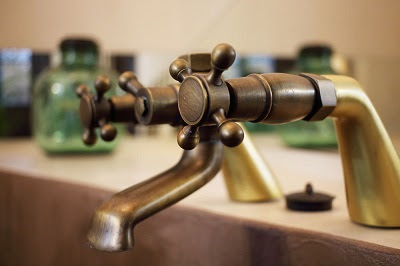Saturday, September 9, 2017
Make the Most Out of Copper & Brass Sales by Knowing How to Clean and Maintain These Metals
Copper and brass are two materials that craftsmen and designers love to work with because of their versatility and sturdiness. While the material is impressively strong such that it can build humongous and solid structures, it is also malleable enough to form and shape as needed.
It’s therefore no wonder that copper & brass sales are always in high demand. From renovation projects to interior design refurbishments, to jewelry making and other handicraft projects, the use of these metals remains popular. Here are some tips that can help you better maintain the copper and brass elements to keep your work or design looking good.
Bathroom and Kitchen Fixtures
During renovation projects, delays sometimes occur. For bathroom redesigns, this delay can affect the appearance of the fixture, especially because they are constantly exposed to moisture. If you want to make sure that everything is shining and glittering like new when you unveil your design masterpiece to your client, use a simple homemade mixture of baking soda and white vinegar. Read more on this blog: http://bit.ly/2xQjsZb
The Importance of Copper and Brass Sales to the Efficiency of Your Interior Design Project
No matter the season, there is no denying the appeal of metals in interior design. Brass and copper in particular are two of the most favored materials to work with for the designers because of their strength, durability, and versatility.
It is important for designers to have the materials readily accessible so the work can continue smoothly. This is why copper and brass sales always present such a great opportunity for industry practitioners to stock up on materials. Not only do they make their own jobs easier, it also helps give their client a variety of options too. Here are some of the best applications for brass and copper.
Lighting Fixtures
Brass and copper can add a subtle but undeniable touch of elegance and sophistication when incorporated in lighting fixtures. You don’t even need to buy a brand new one, too. For example, you can repurpose an old lamp structure and upgrade it by wrapping copper sheet metal to its exterior. Read more on this blog: http://bit.ly/2xTA7IQ
Friday, September 1, 2017
Brass Sales Rely on the Metal’s Popularity and Wide Range of Types
An alloy of copper and zinc, brass is widely used in various industries. Though the generic term used is “brass,” there are more than 60 different types of it. Their properties are not the same but all brass are known for their strength, corrosion resistance, and machinability. They’re also conductive and easy to produce and not to mention, recyclable and environment-friendly.
While you can rely on all types of brass, it’s still important to know their classifications. This way, you can find the right type for the project you’re working on. One way to determine the type of brass is based on its crystal structure.
The crystal structure of brass pertains to the combination of copper and zinc that differs based on peritectic solidification. This means that the way two elements with different atomic structures come together is influenced by temperatures and content ratios. Read more on this blog: http://bit.ly/2xXHoZO
Green Benefits of Getting Your Metal from Environment-Friendly Brass Suppliers
Brass is one of the most commonly used metals. Its application ranges from architectural cladding to lamp sockets to jewelry. You can also see it in marine and industrial equipment. While many choose brass for its flexibility of use, some may overlook the value it gets from its environment-friendliness.
This metal, which comes in forms of bars, rods, and other special shapes, is among the easiest to recycle. In fact, it consists of recycled materials, meaning it doesn’t put any to waste. The most popular type is called Free-Cutting Brass, which is the go-to product of a lot of engineers and machinists. In the United States alone, half of the one million tons of brasses consumed each year are free-cutting types.
Machinability
The term of “free-cutting” is coined due to the metal’s ability to be turned, cut, or drilled with ease. This makes it easier for users to recycle the metal into whatever form they need. No other metal can do what brass can in this regard since they don’t have the strength to undergo fast and long machining. In fact, brass can be machined five times faster than steel and retain the same cutting tool life. Read more on this blog: http://bit.ly/2fJkA64
Subscribe to:
Posts (Atom)




